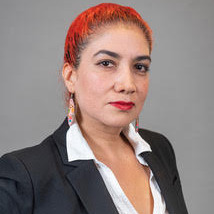Three ways of reading the Compromiso de Sevilla
By Emilia Reyes
In past weeks El Compromiso de Sevilla has been analyzed under microscope to see what it really says about tax, debt, trade, private finance, systemic issues and other agendas. We were also told its impact is so transcendent that its sole existence has saved multilateralism. All the cosmic forces of our current geopolitical dynamics are tied through its pages, it seems. These types of reading come from approaching the document from different lenses.
One, the close-up reading, has been led by the technical crowd. The chapters, the paragraphs, the verbs, all have been dissected to distill the last drop of meaning in the text. After all, these were the focus of the negotiations that determined the substantive agreement. This is the level that tells us about the procedural wins and losses. Let’s use debt as an example. Will we have a UN Convention on Sovereign Debt? No. Will we have an intergovernmental dialogue? Sure. The technical reading stops there. There have been many UN dialogues on the nature and role of Credit Rating Agencies for at least a decade, that in the end don’t change a thing of their perverse impact in national economies of countries of the Global South. On the other hand, we are told, we can do plenty with what is in a text. But that is the second reading. Because in the end, no matter how much the technical crowd tell us Financing for Development (FfD) is about the technical engagement, the technical demands and knowledge, it has very evident limitations. And giving a technical assessment for a technical aspiration, which is by all means key, does not address the ultimate challenge on the ground.
A second reading is that of the full Compromiso de Sevilla as a single entity. Where does it stand in the current global context? It gives a very sad image and has a very weak standing, to say the least. In a world in which a debt crisis is looming, with an ecological breakdown tearing apart the possibility of maintaining life as we know it, with obscene levels of inequalities, the microscopic reading is hardly helpful. And we need to be grounded with the sobering reality. A trade tariffs and sanctions war is our daily landscape, with the imperial core manipulating the economy for the purpose of the annihilation of entire populations through genocide and ecocide. Did it save multilateralism? Pff.
A third reading is that of its historical role and political potential. There is no doubt this capitalist economic system and the current imperial and colonial dynamics are wreaking havoc in life in our planet. This is the conflict of capital versus life that feminist economists warn us about, but is traditionally left aside in these discussions. Nevertheless, FfD has indeed the potential and historical responsibility as no other arena in the UN to address the macro-economic challenges of our times. A robust technical engagement and reading will never be enough to tackle the larger global challenges, but it can give some guide to the process to follow. The political focus has to be key to drive with ambition and clarity in the understanding of what is at stake.
What are the next steps? The larger battles of the reform and transformation of the international financial architecture have to happen now in the UN General Assembly. We better be ready for that, with the disposition to uphold dignity and wellbeing for people and planet.


